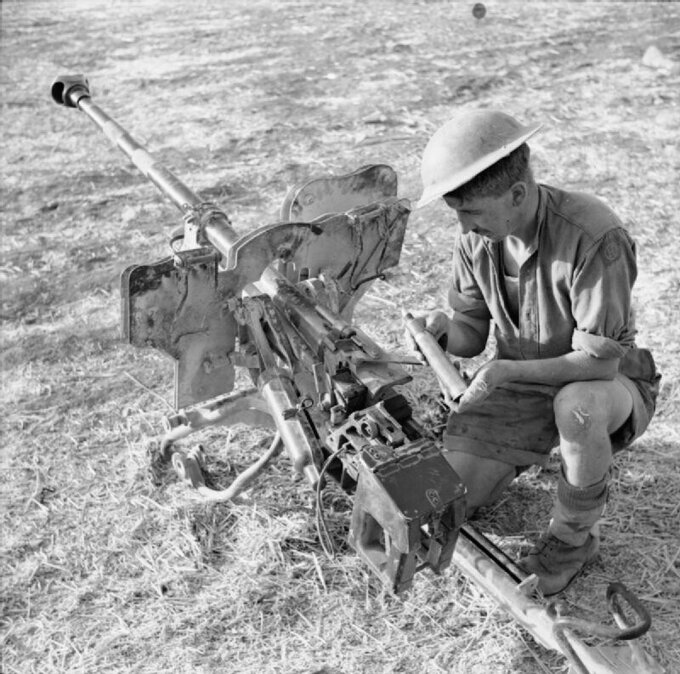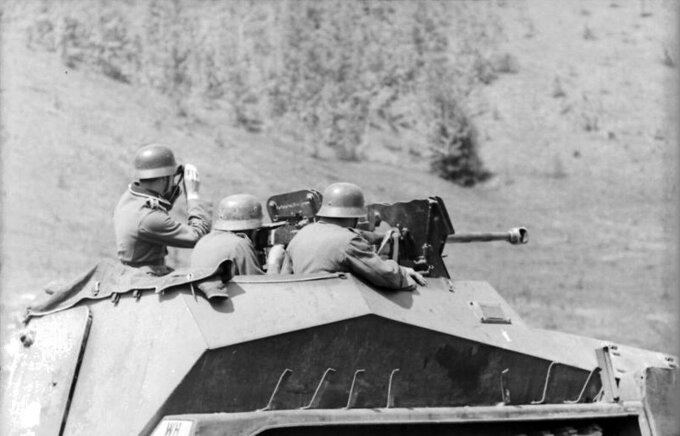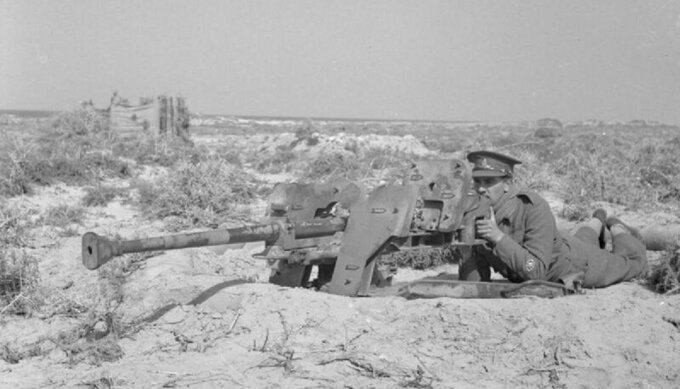Retaining a lethal enough anti-tank weapon while maximizing mobility proved troublesome in World War II as tank armor increased in an arms race among the belligerents. As the different countries researched better ways of shrinking strong anti-tank power into a man-portable format, one of Germany's concepts took an innovative approach with the application of the "squeeze-bore" weapon to produce a high-velocity rifle at a smaller caliber yet just as capable of punching through tank armor. The s.Pz.B.41 is the result and armed many German soldiers and armored fighting vehicles like the Sd.Kfz.221 in War Thunder, but was such a weapon worth the squeeze?
The concept of a squeeze-bore weapon began in the early 20th century under the proposal of German professor Karl Puff. This materialized into a weapon after World War I by Hermann Gerlich. The design used a conical shell in a barrel that had a narrowing caliber width to "squeeze" the shell to make the most of the propellent energy behind the shell. This resulted in extremely high muzzle velocities, which broke records at the time, but the downside to the design was the high production cost and complexity of producing the barrel design, and the short barrel life due to the stresses involved.
After Gerlich's death in 1934, his designs were picked up by Mauser who continued work on the squeeze-bore weapon. Mauser engineers at Obendorf developed a 28/20 mm weapon in 1939, which was designated the Gerät 231 or MK.8202. This was further developed and trialed in the Summer of 1940 by the Wehrmacht. The weapon was eventually accepted into service in 1941 as the 2,8 cm schwere Panzerbüchse 41, or shortened as s.Pz.B.41. Production of the weapon by Mauser ran between 1940-1943 with a total of 2,782 units produced, with a unit price of around 4,500 Reichsmarks each.
The s.Pz.B.41's benefit was maintaining a high-velocity penetrating shell at a lighter weight than the 37 mm PaK 36. The s.Pz.B.41 weighed 223 kg (~492 lb.) altogether, while the PaK 36 weighed roughly 400 kg (~880 lb.). The s.Pz.B.41 could also be disassembled and carried by a crew of five, further enhancing the weapon's mobility.
The weapon proved useful on the Eastern Front as a weapon against the Soviet's new T-34 and KV-1 tank. Several were also sent to the North African theatre. However, the increasing armor on tanks eventually made the s.Pz.B.41 obsolete as a front-line anti-tank weapon by 1943. The s.Pz.B.41's armor-piercing shell being built from tungsten also complicated the weapon's longevity as the material became scarce in Germany. However, the weapon remained as an anti-materiel weapon against infantry fortifications and thin-skinned or lightly armored vehicles.
Captured samples of the s.Pz.B.41 by the Allies revived interest in developing tapered-bore designs on the American 37 mm cannon and the British 2-pounder cannon, with the overall goal of improving armor penetration on the same lightweight platforms. However, the design issues of short barrel life and complexity in manufacturing were never overcome, so none of the experimental designs were accepted into US service.
Bibliography
- Lone Sentry. "'German Antitank Weapons' from Intelligence Bulletin, November 1944." Lone Sentry, n.d., Website Accessed 25 May 2021 (Archive).
- Military Intelligence Service: War Department, German Infantry Weapons. Washington: United States War Department, 25 May 1943.
- Samsonov, Peter. "Schwere Panzerbüchse 41." Tank Archives, Blogger, 20 Aug. 2016, Website. Accessed 25 May 2021 (Archive).
- Zaloga, Steven J. US Anti-tank Artillery 1941-45. Osprey Publishing Ltd., 2005.



